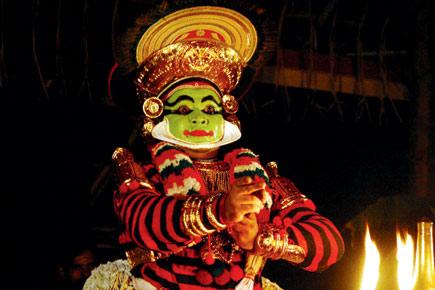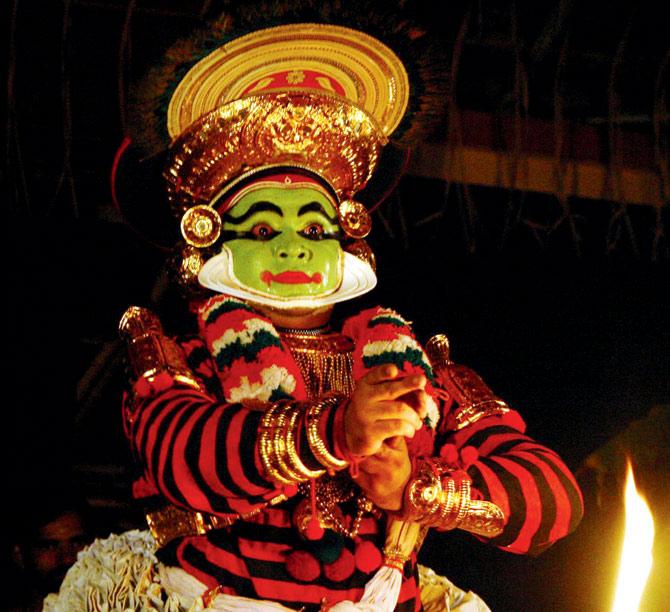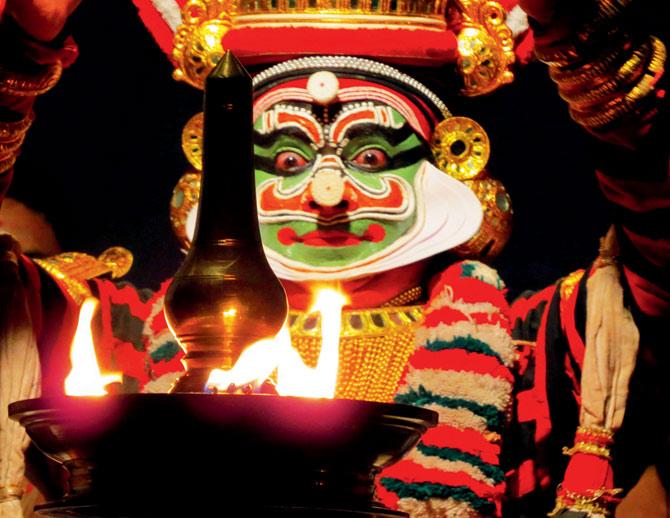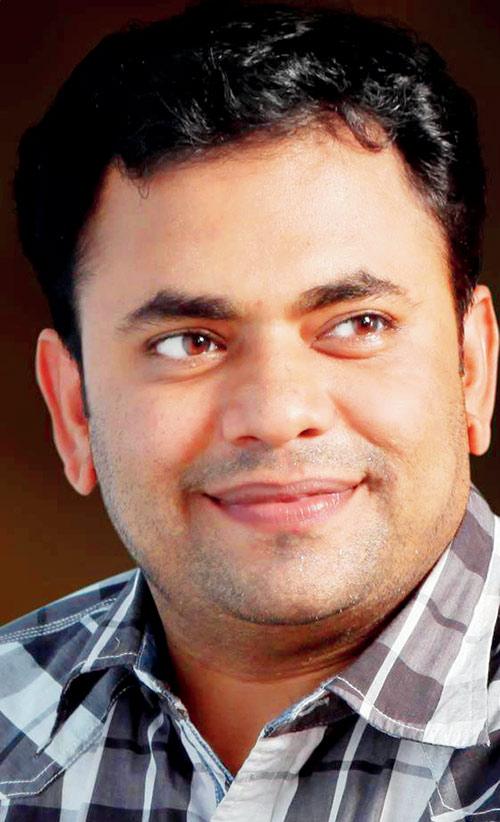Learn the intricacies of a 2,000-year-old heritage Sanskrit theatre that is native to Kerala, at a five-day workshop

Chakyar as Ram
![]() Over the next week, if you drop by The Hive in the evenings, you will spot a 36-year-old artiste reciting Sanskrit verses from the Ramayana and later, teaching a group of 10 guests, how to enact them through expressions and physical movement, without using a single word. That’s Kerala-based Renjith Chakyar, who will be in town for a five-day workshop on Koodiyattam, presented by city-based theatre production, FATS TheArts.
Over the next week, if you drop by The Hive in the evenings, you will spot a 36-year-old artiste reciting Sanskrit verses from the Ramayana and later, teaching a group of 10 guests, how to enact them through expressions and physical movement, without using a single word. That’s Kerala-based Renjith Chakyar, who will be in town for a five-day workshop on Koodiyattam, presented by city-based theatre production, FATS TheArts.

Chakyar as Ram
ADVERTISEMENT
The Koodiyattam story
Known as one of India’s oldest living theatrical traditions, Koodiyattam, a form of Sanskrit theatre native to Kerala, originated over 2,000 years ago. It was first practised in temples before turning into a full-fledged dramatic presentation.

Renjith Chakyar as Ravana in a Koodiyattam theatre performance
In its stylised and codified theatrical language, the form focuses on the thoughts and feelings of the main character, giving prominence to netra abhinaya (eye expression) and hasta abhinaya (the language of gestures). In fact, one of South India’s popular dance forms, Kathakali is also said to have its origins in the folk traditions of Koodiyattam. In 2001, it attained the status of ‘intangible cultural heritage of humanity’, proclaimed by UNESCO.

Renjith Chakyar
“In Koodiyattam, a narrator recites Sanskrit shlokas and actors enact them using mudras (hand gestures) and eye expressions. Mizhavu, a drum-like instrument made of clay or copper is played live which the artiste on the stage counts the beats. The main difference between Koodiyattam and other art forms is that men and women perform the male and female characters respectively,” informs Chakyar, who belongs to the Pothiyil family of the Chakyar community, a caste among the Hindus known for conducting the Koodiyattam form of theatre.
Initiated into the art form when he was 12, Chakyar learnt the nuances from Guru Ammannur Madhava Chakyar, a pioneer who made it popular in the west. “Traditionally, theatre groups would stage night performances, which would last for six to 12 days. Now, the plays are performed in a single day. While Ramayana and Mahabharata are popular acts on stage, we’ve also seen Macbeth performed in Koodiyattam,”âu00c2u0080u00c2u0088says the artiste, who also assists as faculty member at National School Of Drama, which has introduced the art form as subject for a three-month semester.
What’s in store?
At the workshop, Chakyar will introduce you to the basics of the theatre form, which include breathing exercises, hand-eye coordination and the 24 mudras, which are alphabets integral to the language of Koodiyattam. “Every mudra needs to be accompanied by eye expressions and bhava (behaviour). Physical movements are also important,” he informs. Many of the elements from the workshop can also be used in contemporary theatre. He will offer insights into the make-up used to highlight various shades of characters. “Heroic characters like Ram and Laxman have their faces painted only in green while darker characters such as Ravana feature intricate lines, painted in red and green, along with a rice paper frame pasted on their faces. That make-up takes close to four hours,” he sums up.
 Subscribe today by clicking the link and stay updated with the latest news!" Click here!
Subscribe today by clicking the link and stay updated with the latest news!" Click here!







